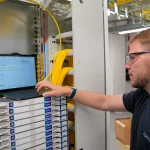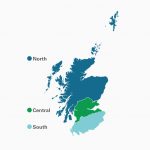Government to Build More Rural Homes, But What of Broadband?
The Chancellor, George Osborne, has set out a new 10-point plan for boosting productivity in England’s rural areas by, among other things, amending the planning rules to allow new homes on Rural Exception Sites. But what about the need for faster broadband and mobile? We hope you like Satellite.
It’s claimed that over the past five years some 60,600 people have moved from the city to the countryside and the number of new businesses in rural areas has also risen by 30%. As such the Government appears to recognise that they’ll need to invest more in these areas in order to improve local transport, education, wages and infrastructure etc.
Advertisement
The answer to this is apparently a new 10-Point Plan for Boosting Productivity in Rural Areas (PDF), which predominantly sets out a large swathe of commitments that will be very familiar because the vast majority of them have been announced before as part of other programmes.
Elizabeth Truss, Environment Secretary, said:
“Our rural areas could be generating billions more for the UK and providing many thousands of new jobs – this plan will make that a reality, unleashing the full potential of our countryside to create a true One Nation economy.
We’re connecting the countryside to make it just as simple to run a business from Cornwall as it is in Camden. But it’s not just about transport and technology. Our plan will help us create thriving towns and villages where generations of families can open and expand their businesses, buy a home and educate their children at first class schools.”
Naturally our focus is on the communications and Internet side of things, not least since the Government has yet to set out a final strategy for reaching 100% of the UK with superfast broadband (24Mbps+) by 2020. The current Broadband Delivery UK programme aims to make related connectivity available to 95% by the end of 2017 (likely to slip into 2018), but that still leaves a predominantly rural 5% to wonder what will happen.
Sadly today’s new plan does little more than reiterate what we already know, which is that inferior Satellite is now seen as the solution for ensuring that 100% can get a minimum download speed of 2Mbps by the end of this year (Universal Service Commitment) and it’s also confirmed that a plan for reaching the final 5% with “superfast” connectivity will be revealed as part of the annual Spending Review 2015 on 25th November; Satellite will play a part in that too.
At least broadband and mobile occupy the top two points of the new plan, which perhaps suggests a degree of confidence in a programme that has, alongside contract partner BT, so far made reasonable progress (3 million premises have benefitted). Not that everybody will share that view.
Advertisement
1. Extensive, fast and reliable broadband services
Geographic coverage and take-up of superfast broadband in the UK is already the highest of the 5 largest economies in the EU. The government’s superfast broadband programme has recently reached over 3 million premises and is passing an additional 40,000 premises each week. There is a need to go further, particularly to better connect rural areas:
• The government is committed to delivering superfast services of at least 24 megabits per second (Mbps) to 95% of UK households and businesses by 2017.
• The government is also working closely with providers to explore how to extend superfast broadband beyond the current 95% target. It is investing in a series of market pilots to test alternative solutions. Lessons from the pilots will be published later in the year and decisions on further broadband rollout will be taken in the Spending Review in November.
• £129 million cashback from the existing superfast broadband programme will be made available to local authorities to reinvest in providing superfast broadband coverage to even more homes and businesses, much earlier than originally planned.
• By the end of 2015, access to standard broadband will be available to anyone unable to get a service of at least 2Mbps. This will be made available through the option of satellite broadband, which will have the capability of delivering superfast speeds for those that want them.
• The government will work with Local Enterprise Partnerships (LEPs) and other partners to ensure that EU funding to support broadband infrastructure in rural areas can be targeted effectively to support growth.
• To support fixed high speed broadband infrastructure, the government is considering making permanent the planning relaxations introduced in 2013.
• Over the longer term, the government will support the market to deliver ultrafast (at least 100 Mbps) broadband coverage across the UK.
2. High quality, widely available mobile communications
The government will put in place the right conditions, and work actively with providers, to ensure rural areas have the best possible coverage of high quality mobile services:
• The government will work closely with industry to support further improvements to mobile coverage in the UK. This will supplement the legally binding obligation on Mobile Network Operators to provide voice and SMS text coverage to 90% of the UK by 2017 and Telefonica’s licence obligation to deliver indoor 4G coverage to 98% of UK premises by 2017.
• The government proposes to extend permitted development rights to taller mobile masts in both protected and non-protected areas in England to support improved mobile connectivity, subject to conclusions from the Call for Evidence which closes on 21 August 2015.
The March Budget 2015 announcement gives a better overview concerning some of the changes that the Government are likely to announce in their spending review, not least with regards to a Satellite subsidy for the most rural locations.
Elsewhere they’ve also been conducting seven Market Test Pilots of alternative broadband solutions for rural areas, which include various fixed wireless, fibre optic, hybrid fibre and Satellite based technologies. The pilots are being run until early 2016 and some of these will help to inform the funding levels needed to reach that final 5%.
Speaking of funding, an additional £100m is likely to be extracted from the BBC by 2020 for broadband (BDUK Phase 3), while clawback should add up to another £129m to that total and there are rumours of a controversial TAX (“levy“) that could also be imposed upon broadband ISPs in order to help fund the work. Not to mention that some BDUK projects have made deployment “savings” (e.g. using more FTTC than FTTP vs original plans) in the first BDUK phase, which could be used to help expand coverage during later stages.
Never the less there’s no escaping the fact that catering for the most digitally isolated areas, which includes some urban locations, is a very expensive and time consuming business. Sadly some people will have to wait several more years before they see a better connection and that’s unlikely to be a popular reality.
Advertisement
Elsewhere today’s plan also states that rural areas are being given preference in the latest round of bidding for future Enterprise Zones (closing on 18th September 2015), which are business areas that benefit from specific tax cuts, relaxed planning rules and better broadband connectivity. Mind you some of the existing zones have struggled with broadband connectivity (here and here).
Lest we not forget how many rural communities don’t want new homes to be built, perhaps fearing that it can sometimes lead to a loss of cohesion within the village when too many new people move into a small area. The government’s new plan suggests that rural communities will be “allowed to build starter homes for local resident“, although it’s not clear how much say residents will actually have.
On the other hand there is a housing shortage and that’s helped to fuel a rise in property prices, but with urban areas struggling for space it looks increasingly likely that rural communities may have to accept some growth beyond the norm.
Mark is a professional technology writer, IT consultant and computer engineer from Dorset (England), he also founded ISPreview in 1999 and enjoys analysing the latest telecoms and broadband developments. Find me on X (Twitter), Mastodon, Facebook, BlueSky, Threads.net and Linkedin.
« Devon and Somerset Businesses Demand Say in Local Broadband Inquiry

















































Comments are closed